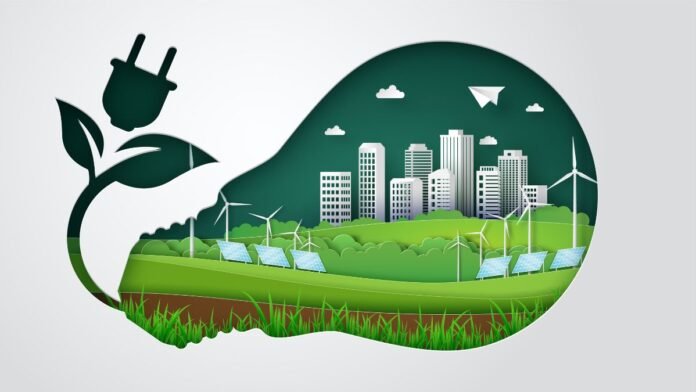Have you ever stopped to think about how electricity is generated and where it comes from? Did you know that much of the electricity we use is produced by burning fossil fuels?
This method of generating power has a negative impact on the environment, which is why many people are turning to green energy as an alternative. But what exactly is green energy, and how does it work?
Green energy explained: Green energy is a term used to describe energy that comes from renewable sources that have little or no negative impact on the environment.
In this blog post, we’ll explore the world of green energy, uncovering its benefits, and examining some of the most common forms of renewable power.
Whether you’re an environmental enthusiast or just interested in learning more about sustainable energy sources, this post is a must-read!
Types of Green Energy
Here are some examples of Green Energy Sources. These sources include solar, wind, biomass, geothermal, and hydroelectric power.
Solar energy works by harnessing the energy produced by the sun’s radiation and converting it into electricity through the use of solar panels. Solar energy is a renewable and clean source of energy that has become increasingly popular in recent years.
Wind energy works similarly, using wind turbines to convert the kinetic energy produced by the movement of wind into electricity. Wind energy is one of the most efficient and cost-effective sources of green energy. The wind turbines are installed in areas where there is a constant supply of wind, such as mountain ridges, open plains, or offshore from coastal areas.
Biomass energy is produced by burning plant or animal waste, such as wood or agricultural waste, to generate electricity. This process releases carbon dioxide, but it is considered renewable because the waste used to produce it would have decomposed anyway, releasing the same amount of carbon dioxide into the atmosphere.
Geothermal energy is produced by leveraging the heat from the Earth’s interior, using steam or hot water to generate electricity. This geothermal heat is continuously replenished, making it a sustainable source of energy.
Hydroelectric power is produced by harnessing the kinetic energy produced by the movement of water, using hydroelectric turbines to convert it into electricity. Unlike fossil fuels, the source of energy for hydroelectric power is water, making it environmentally friendly.
How is green energy good for the environment?
Green energy is important because it helps to reduce our dependence on non-renewable sources of energy, such as fossil fuels, which contribute to climate change.
It is an energy source that does not rely on fossil fuels, and instead relies on renewable resources such as wind, solar, and geothermal.
It is a clean and sustainable source of energy that has the potential to reduce our dependence on fossil fuels and help combat climate change.
Furthermore, green energy sources are often more cost-effective than traditional sources of energy in the long run. Therefore, investing in green energy can be beneficial for both businesses and individuals alike.
It is a sustainable source of energy that has little or no negative impact on the environment, making it an excellent choice for powering our homes, businesses, and communities.




